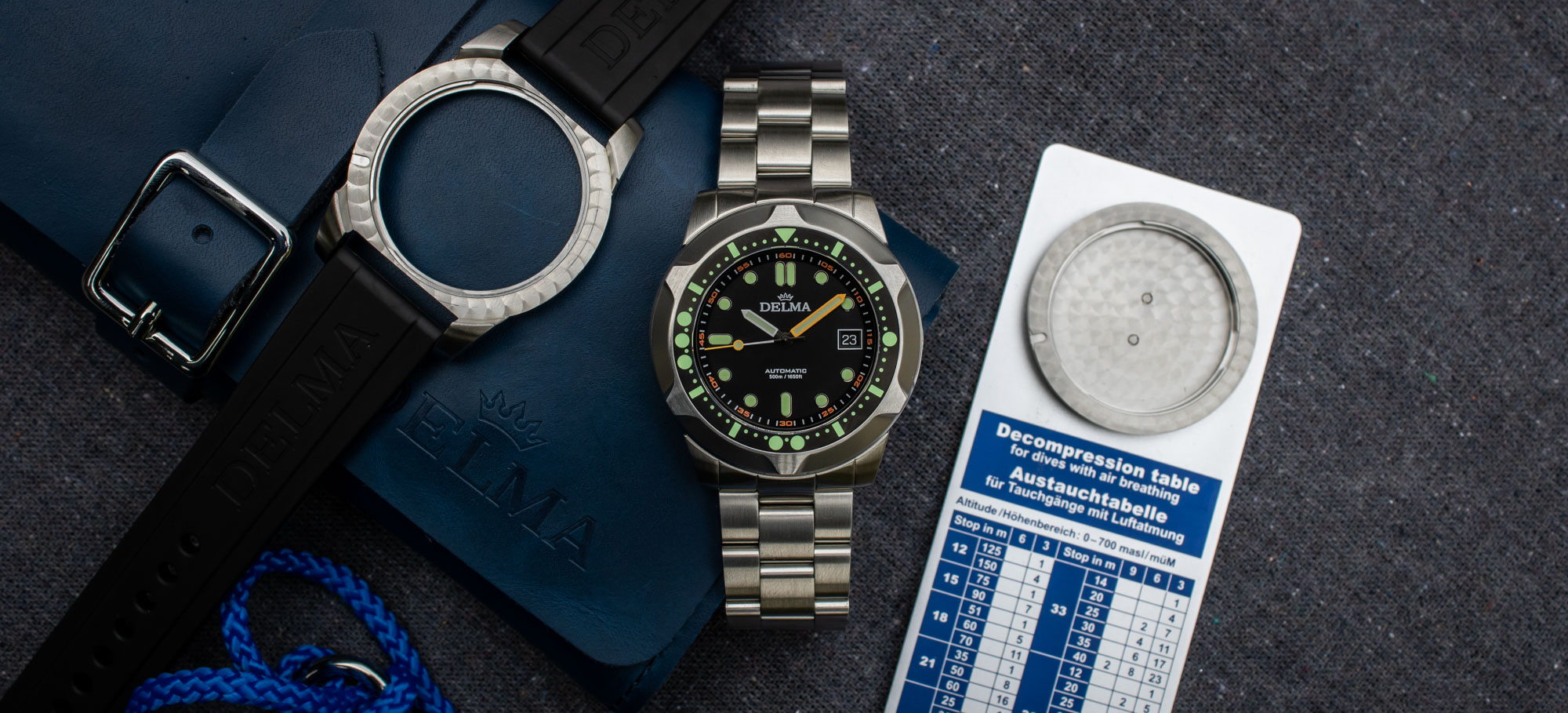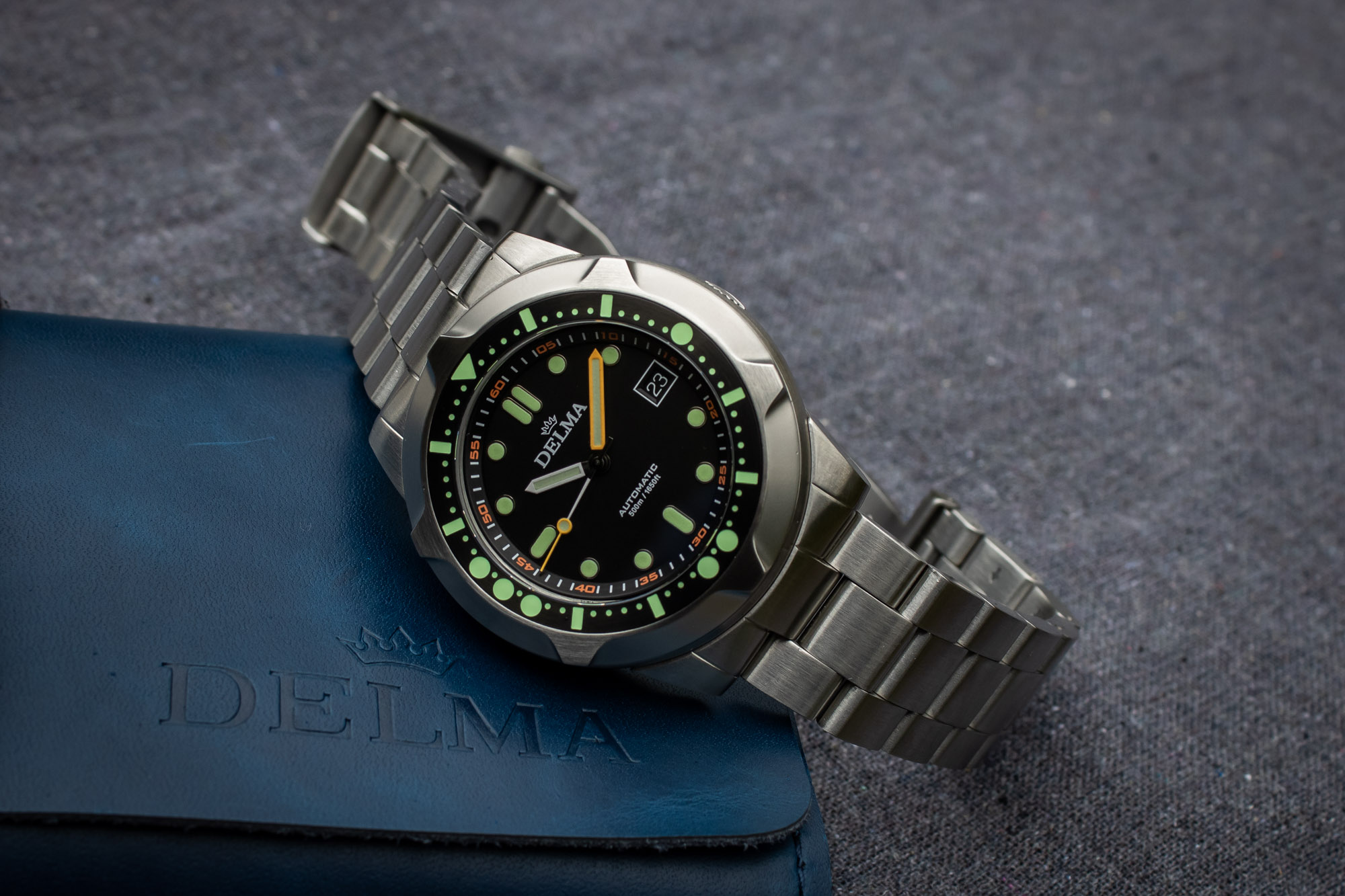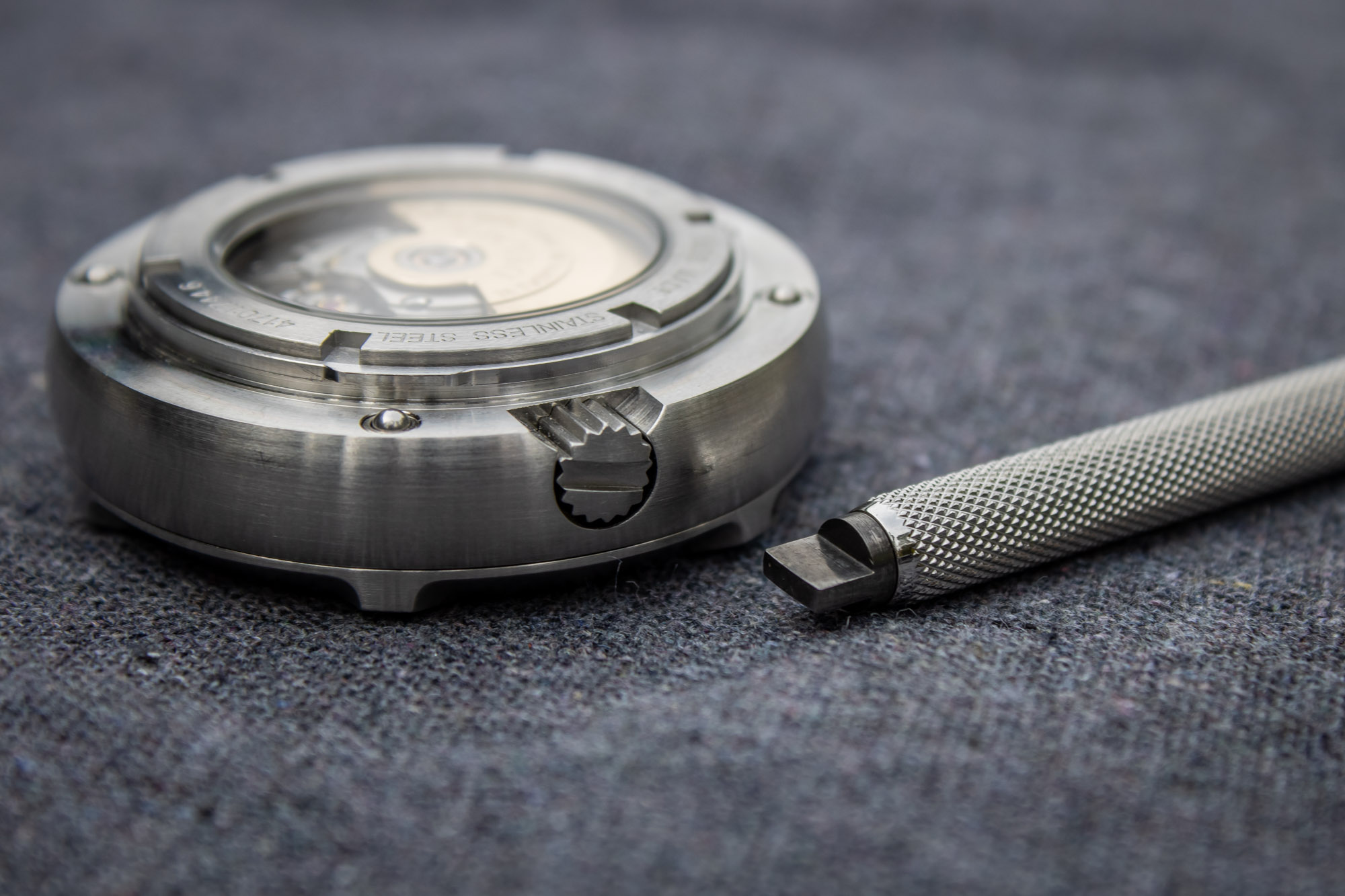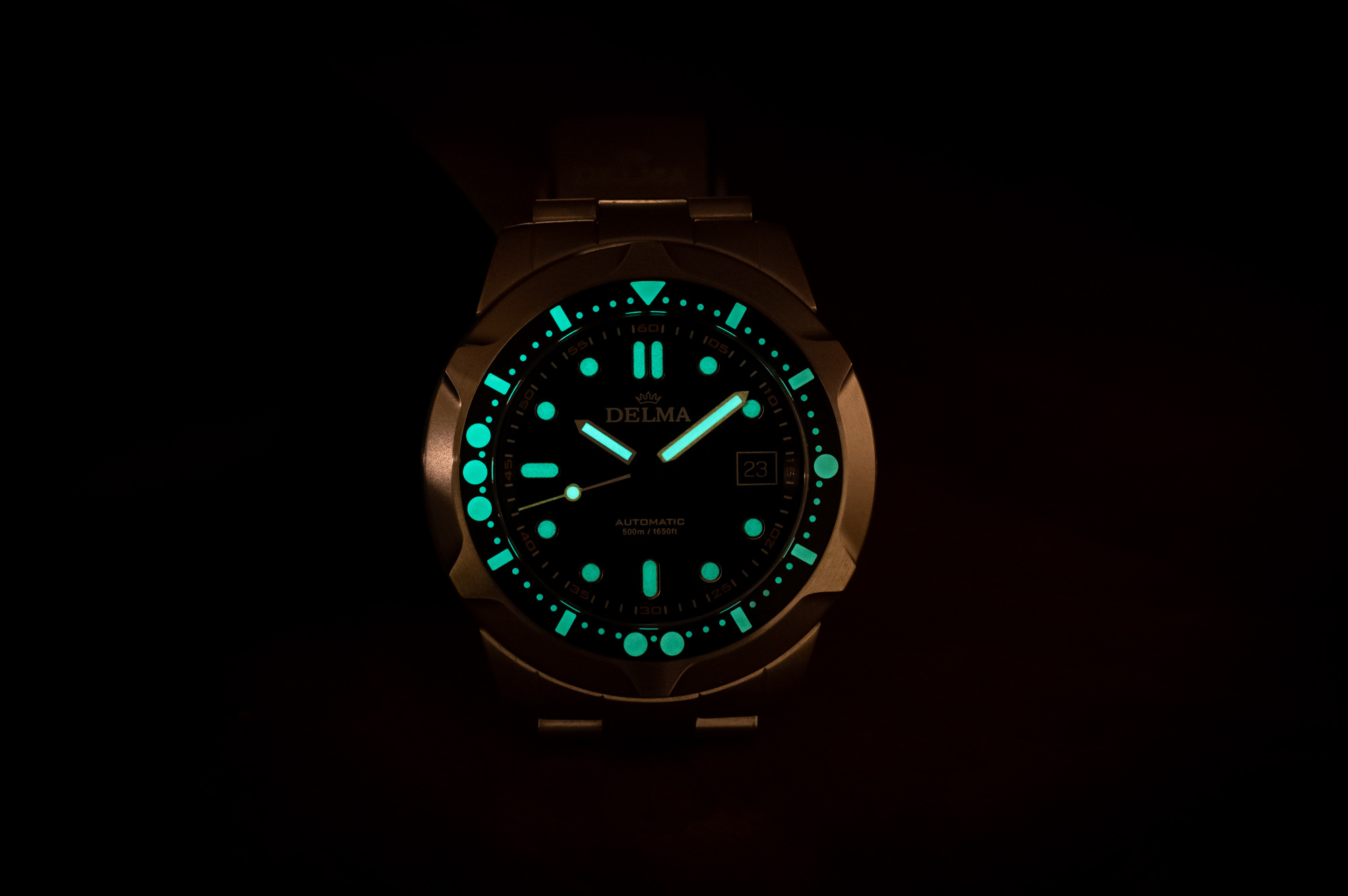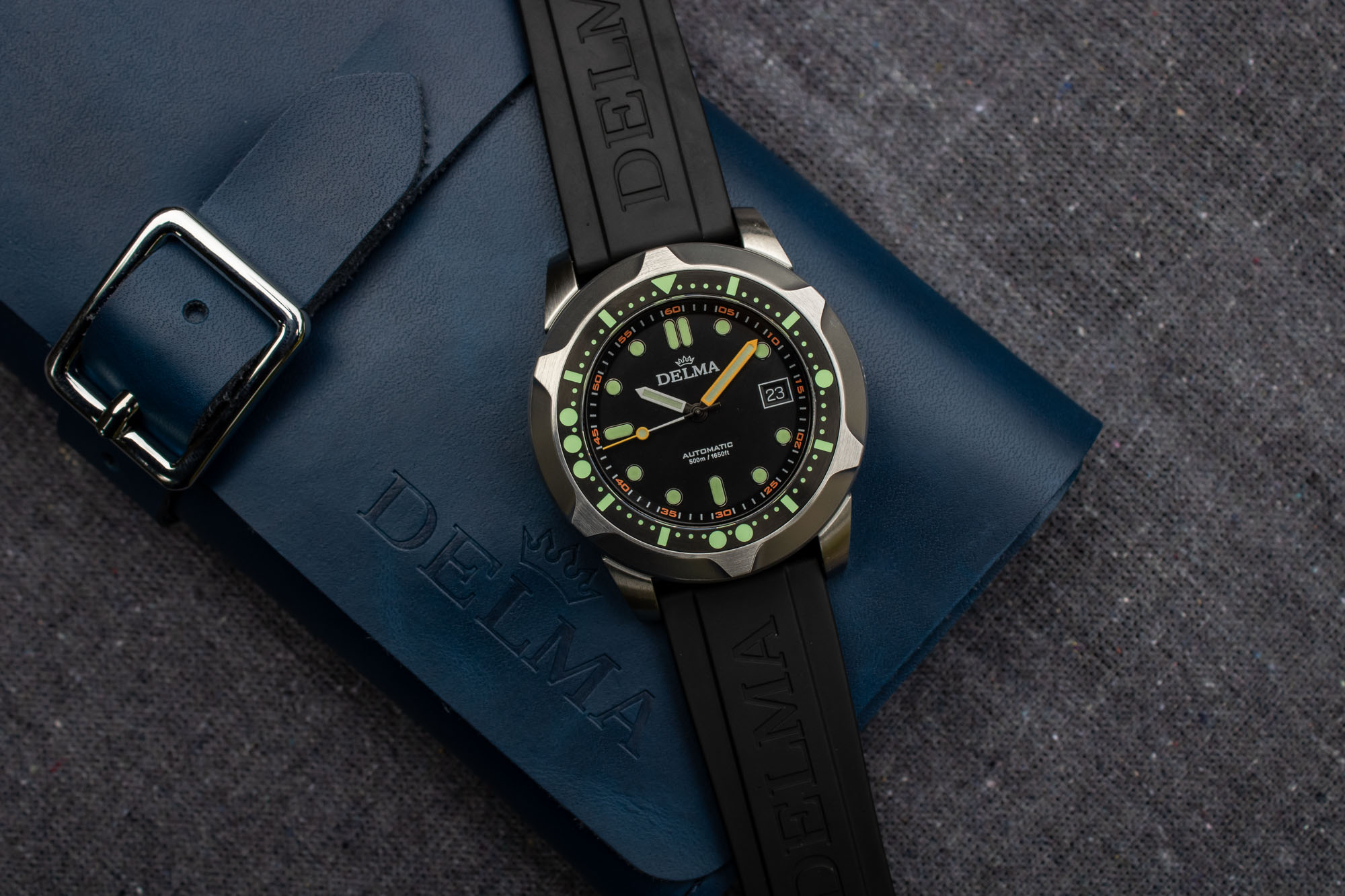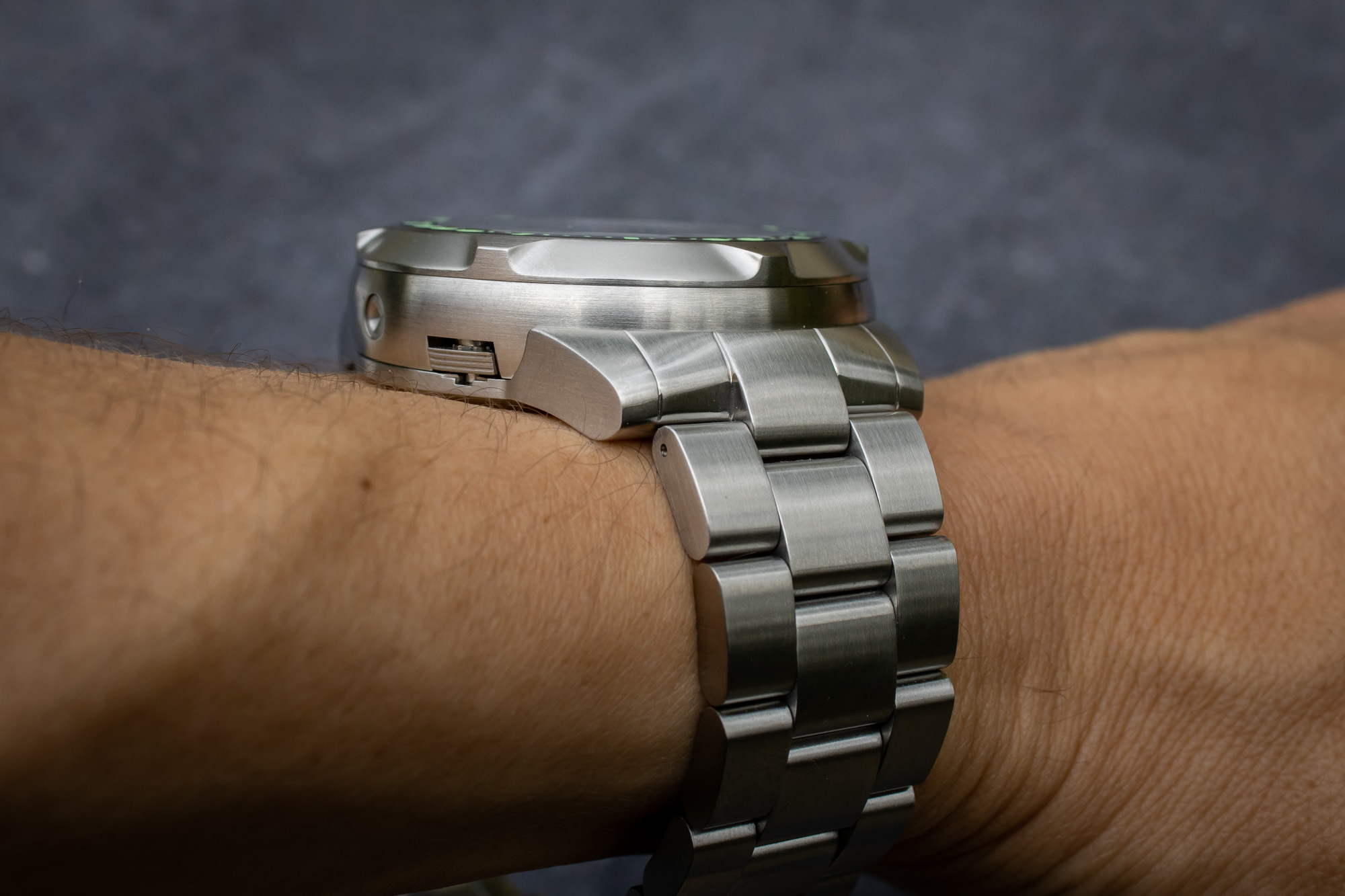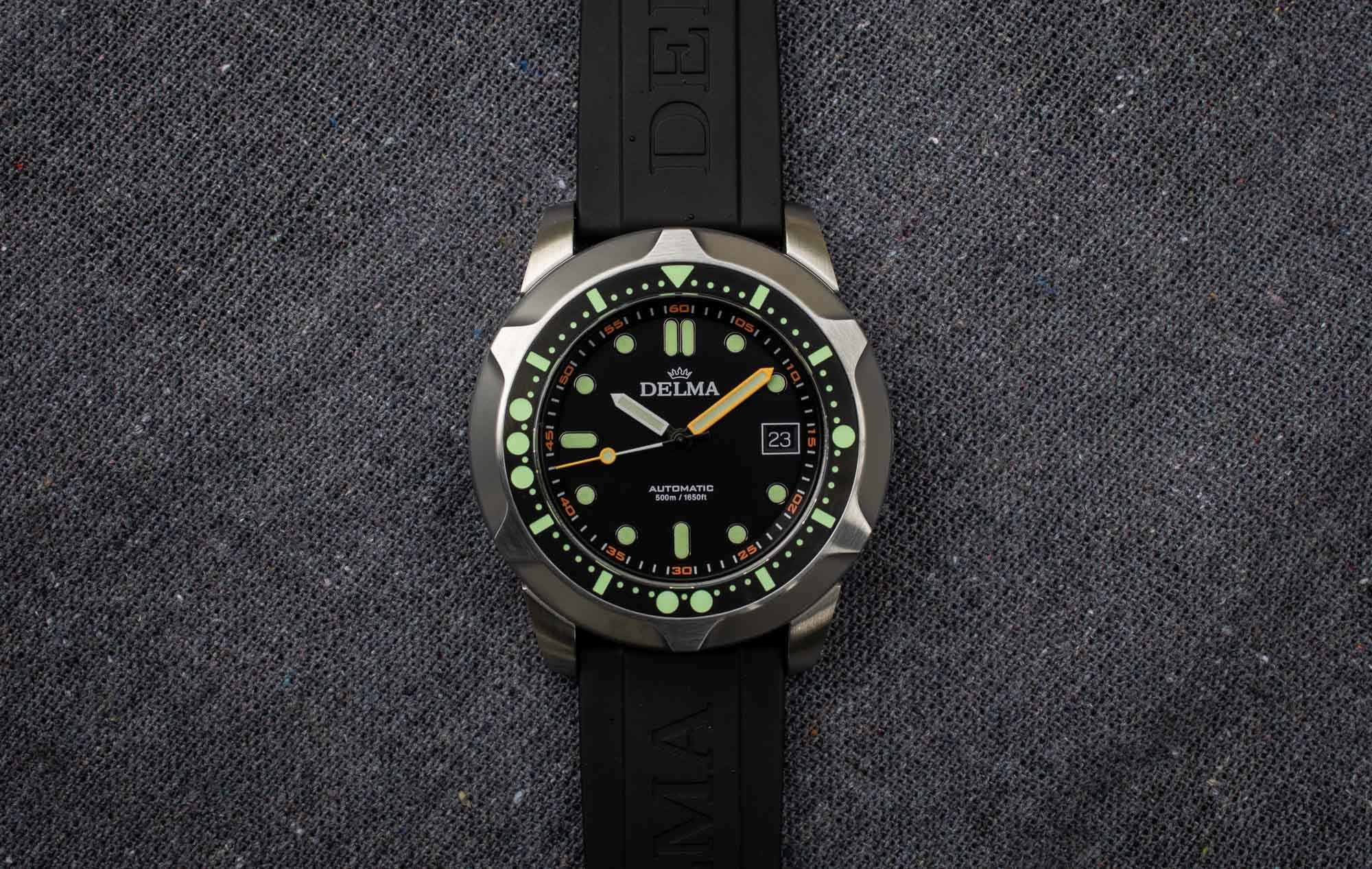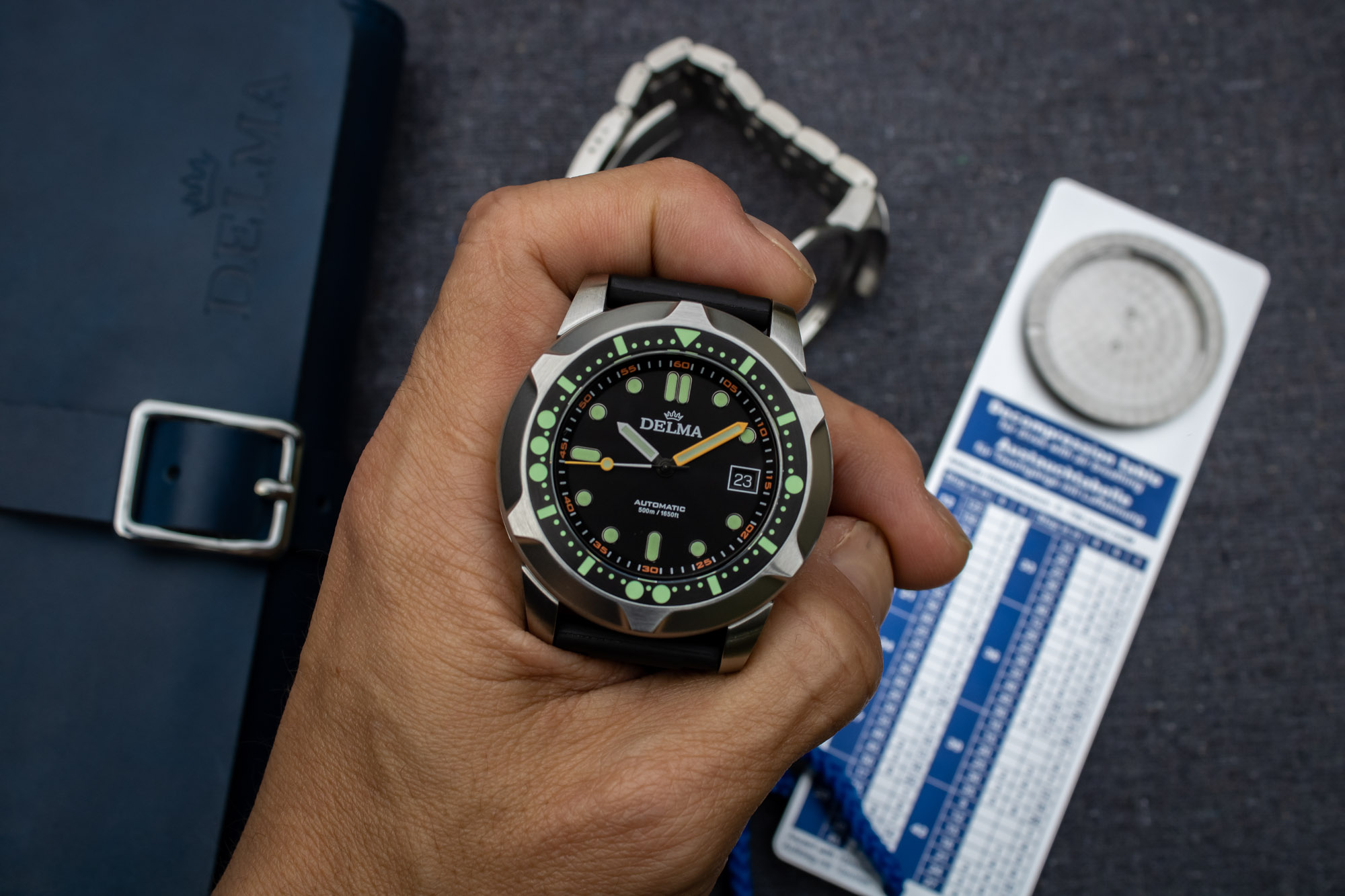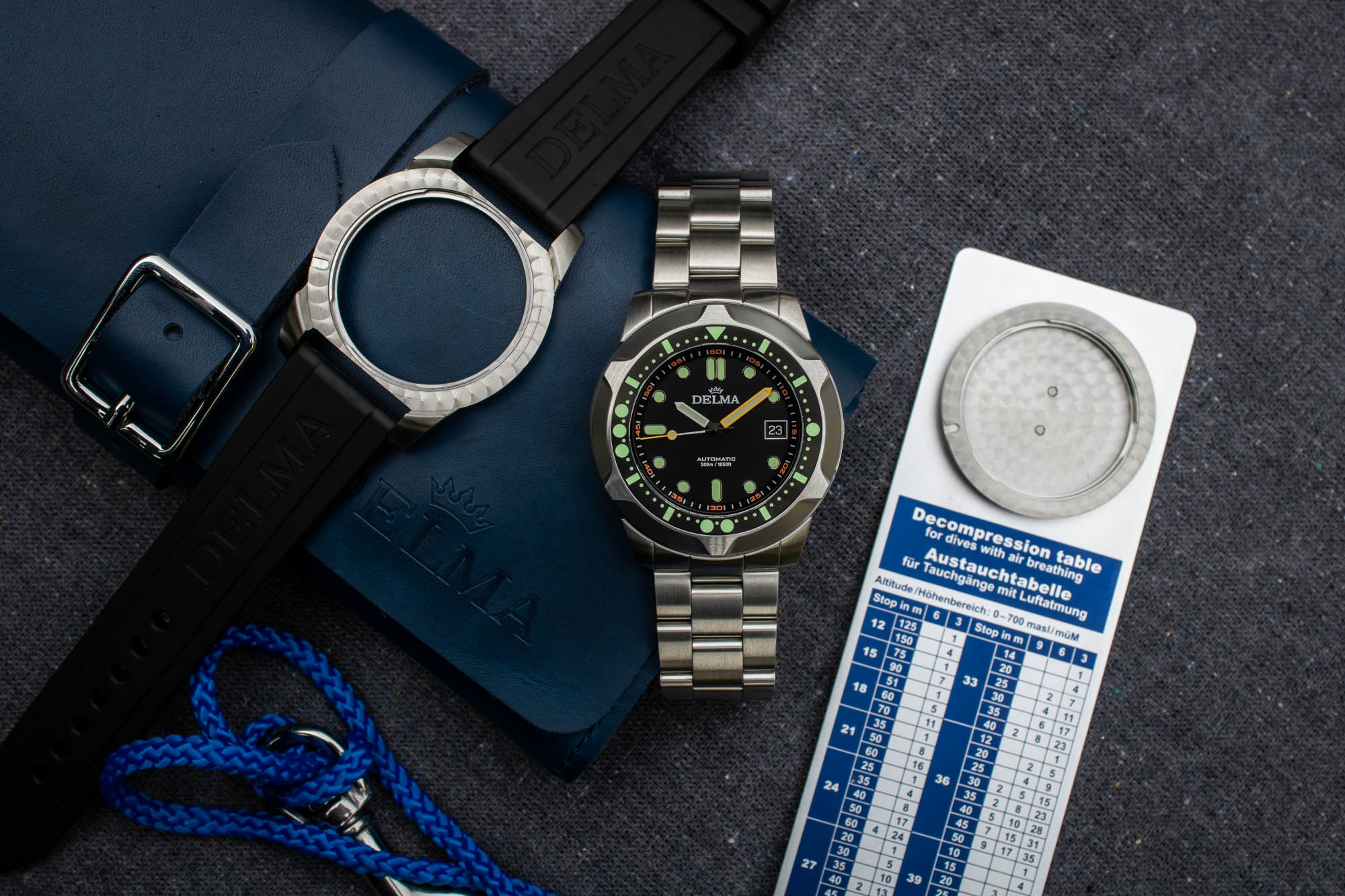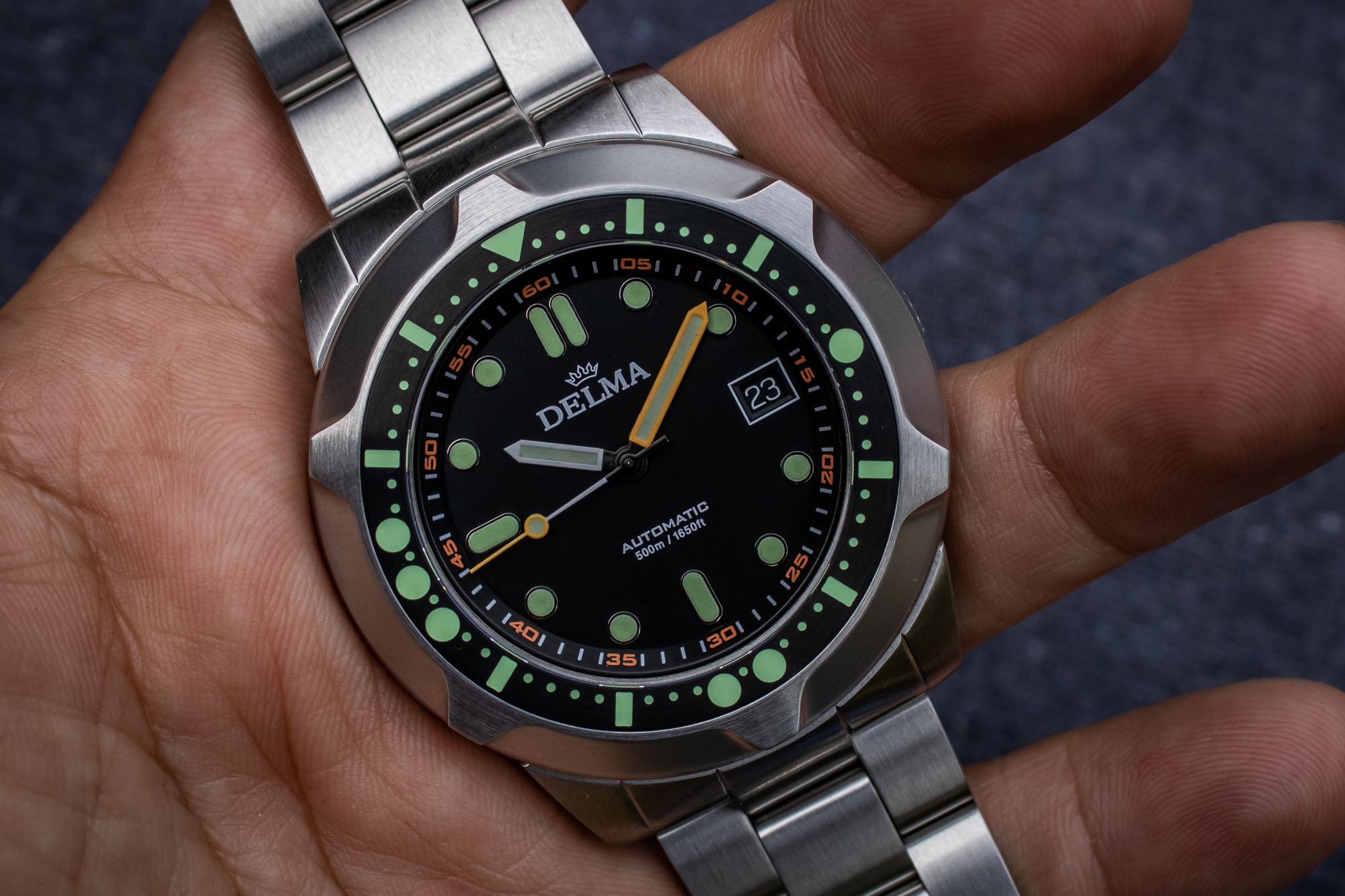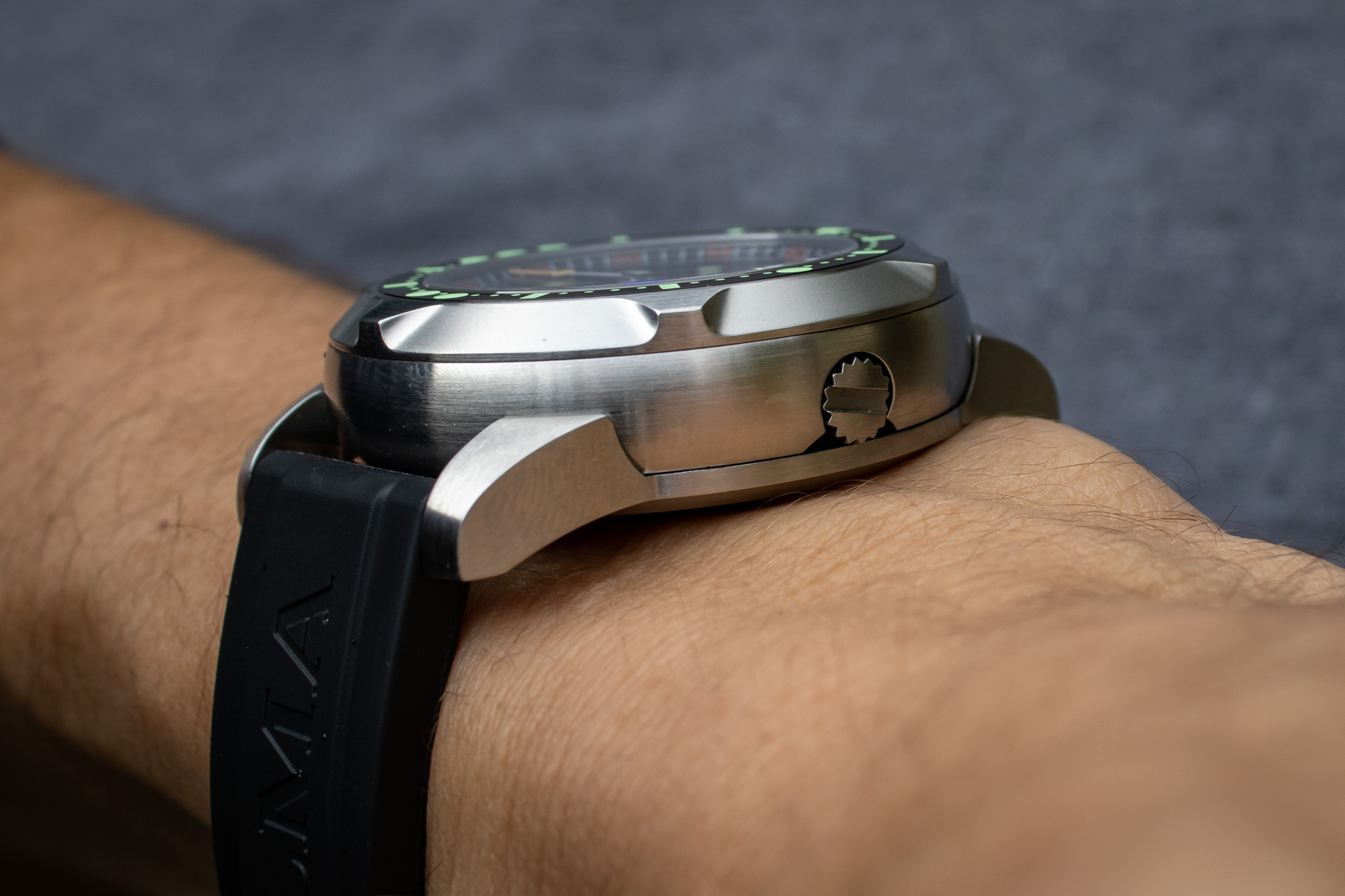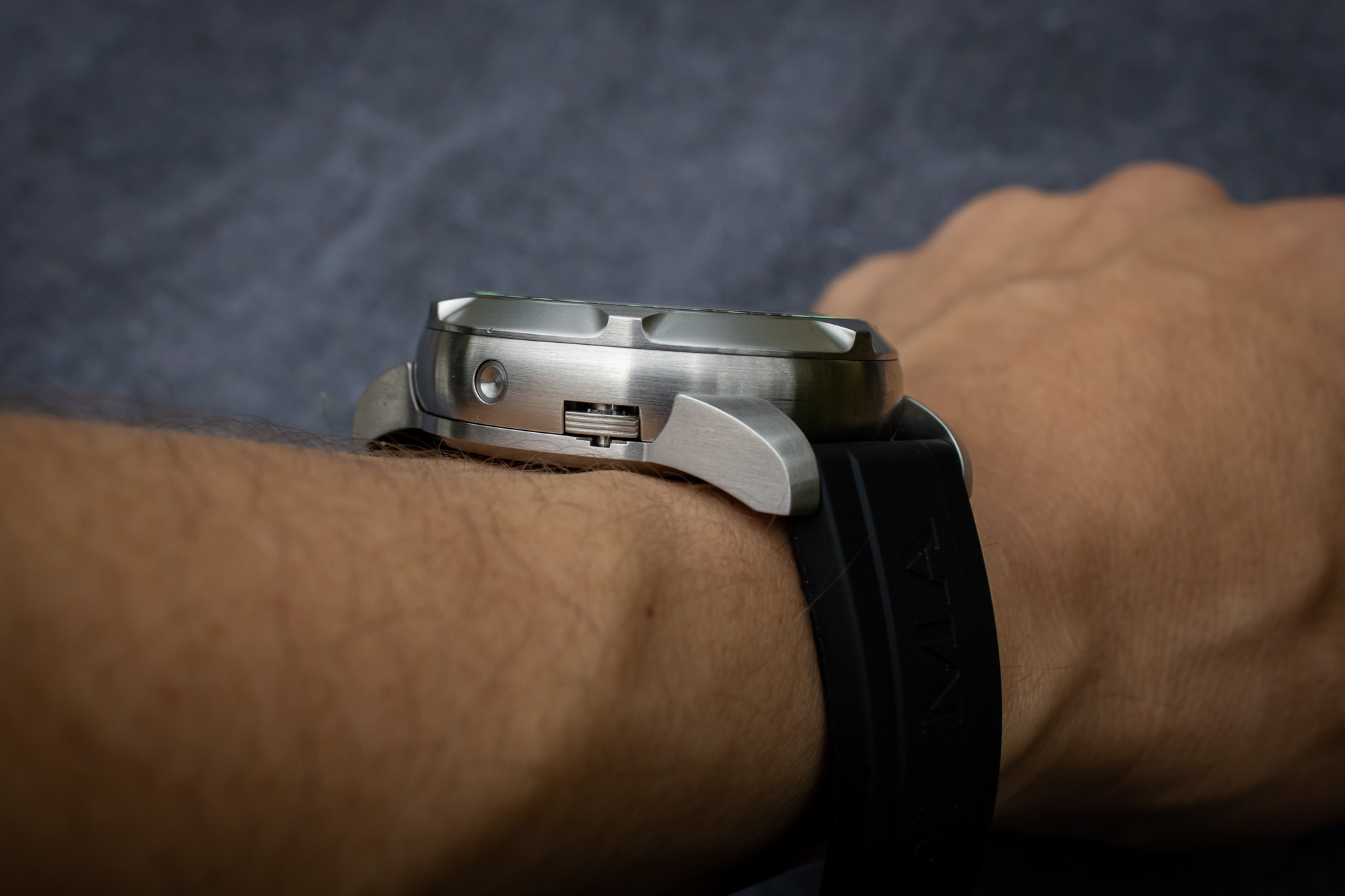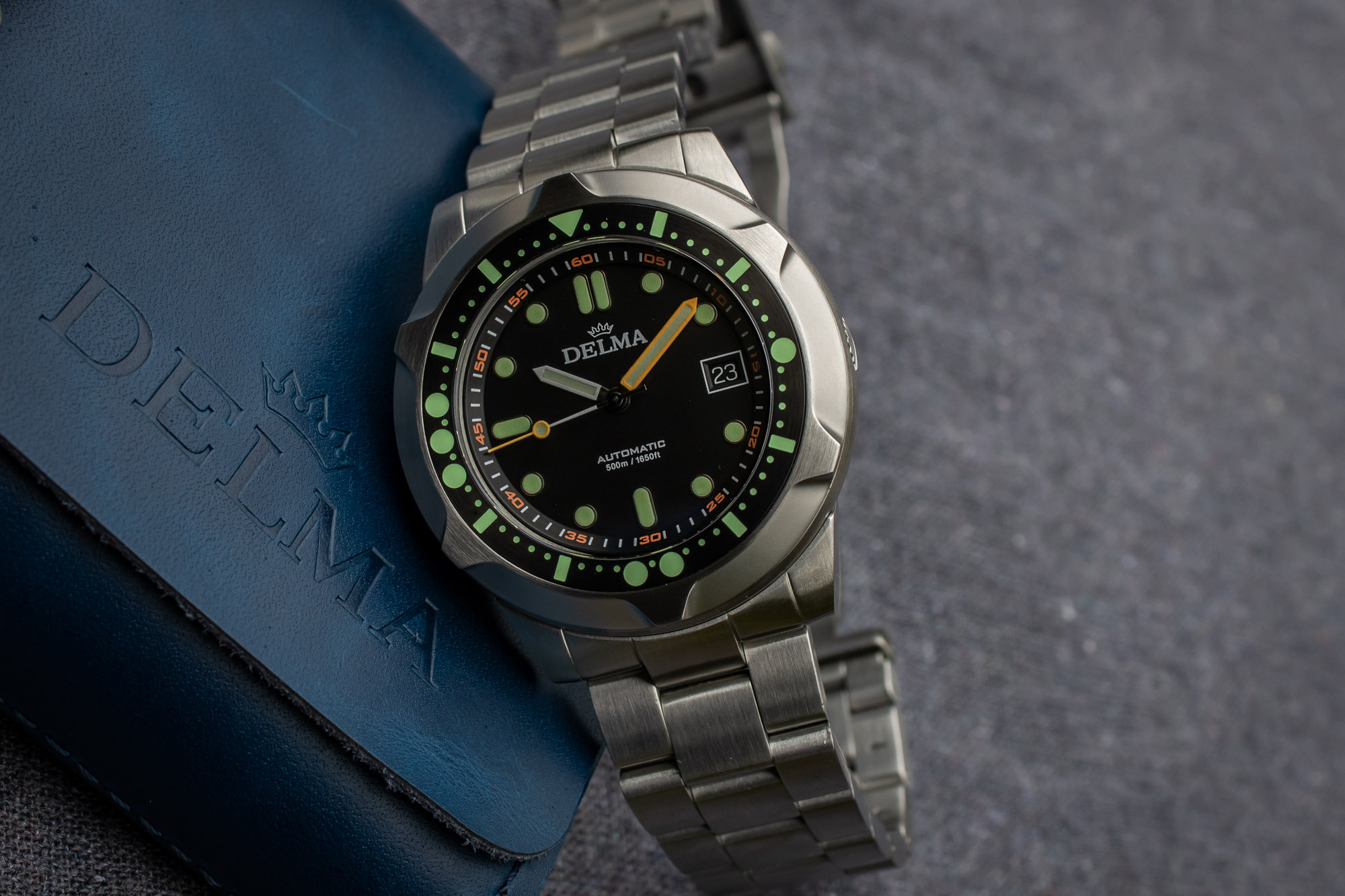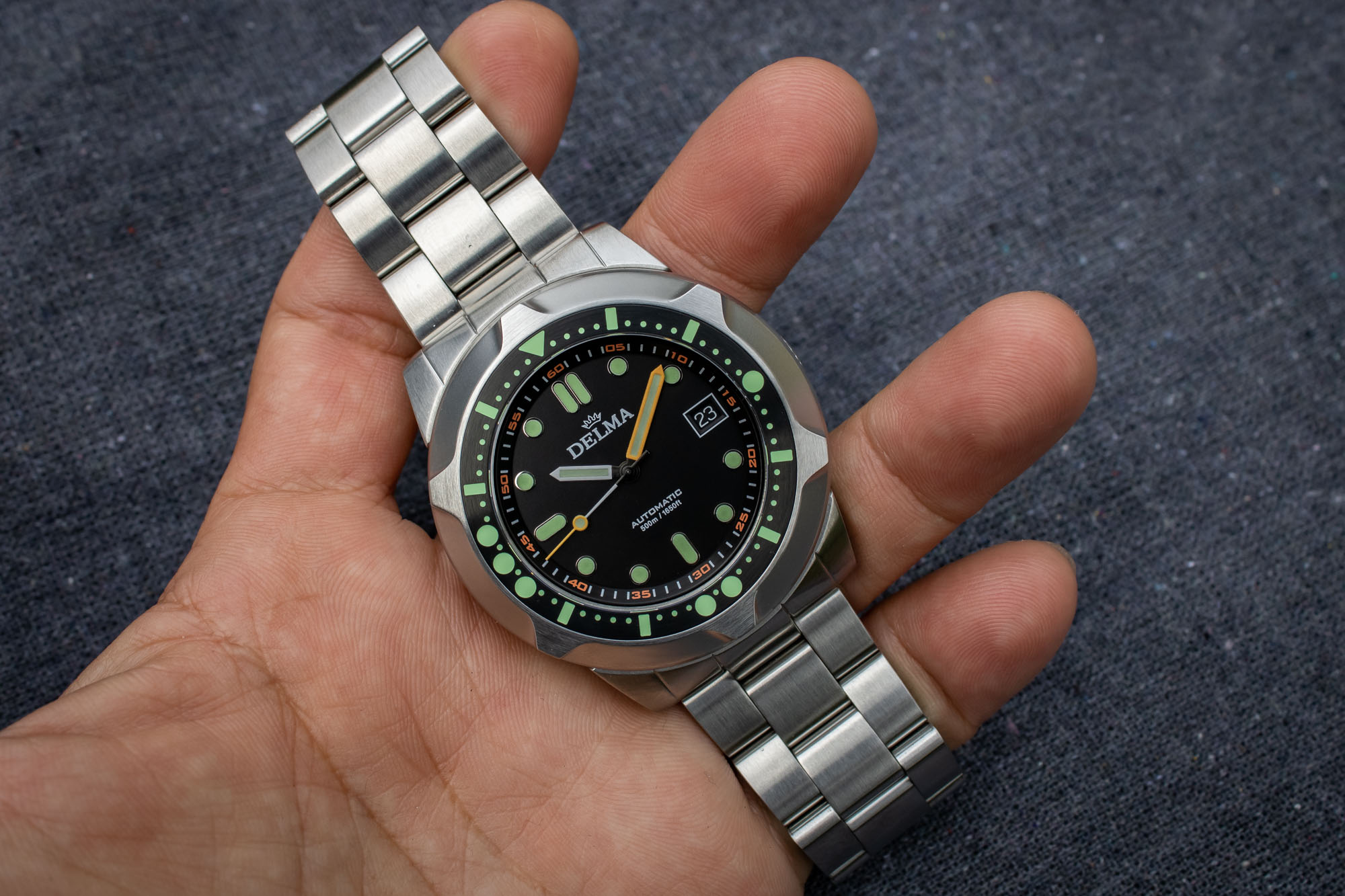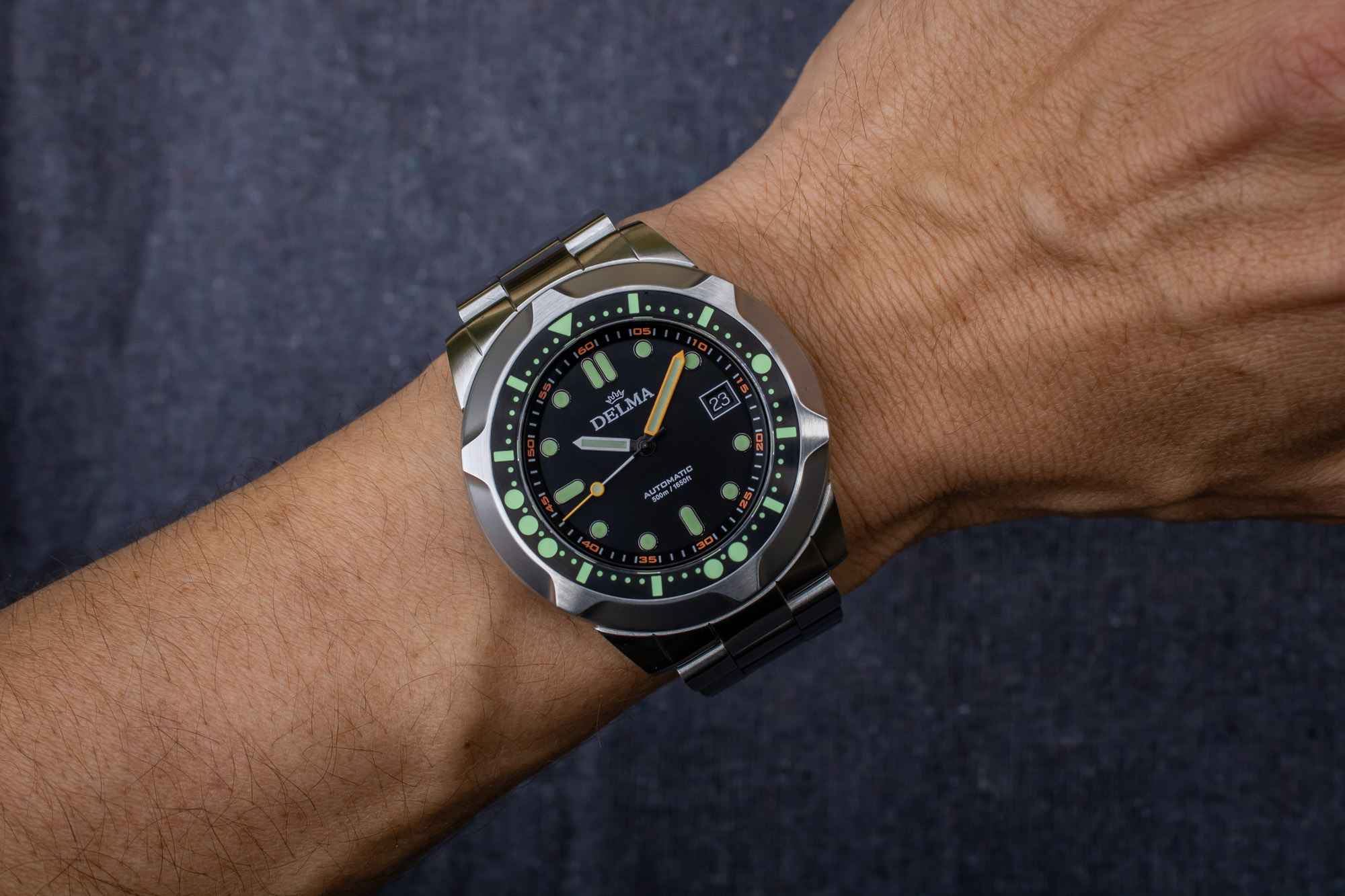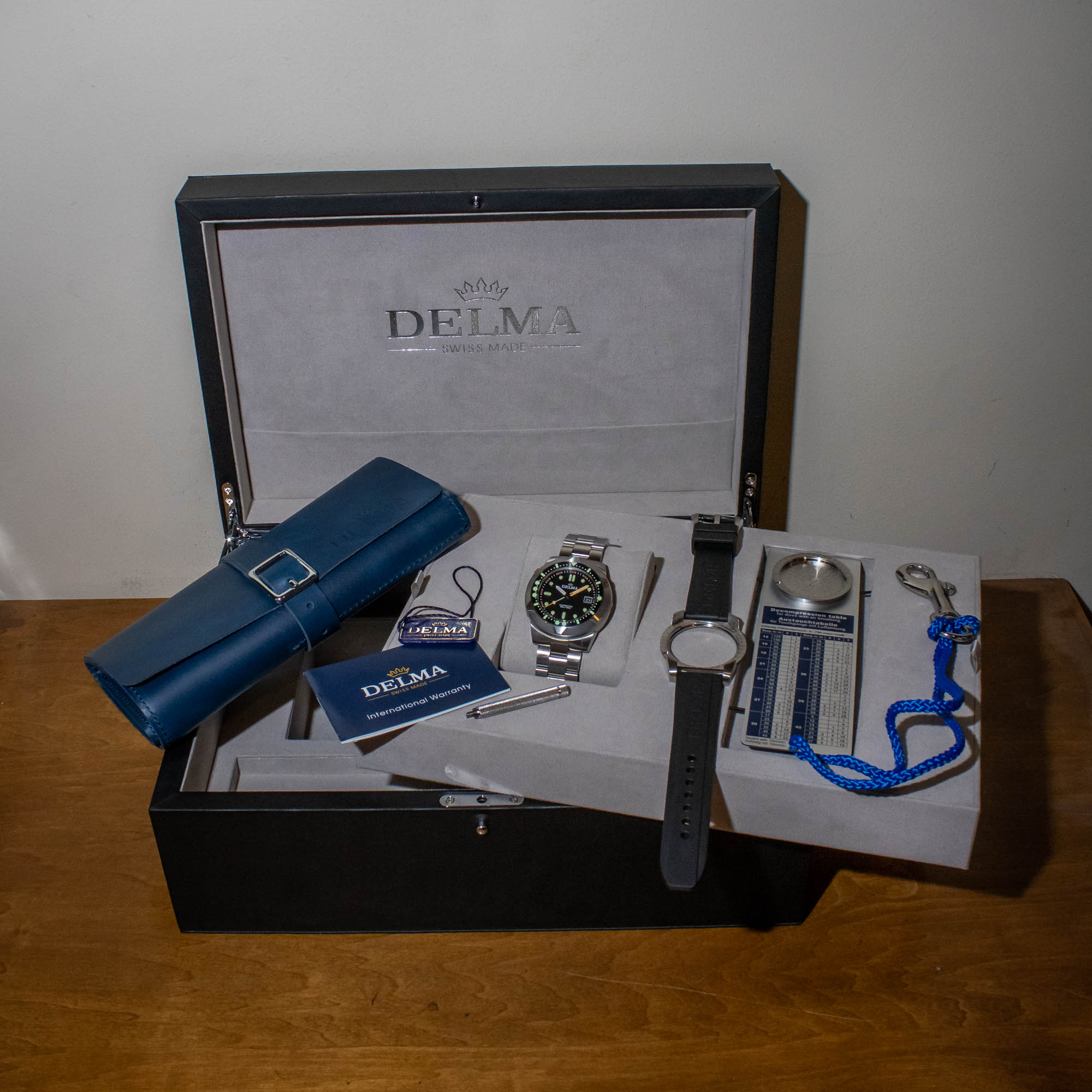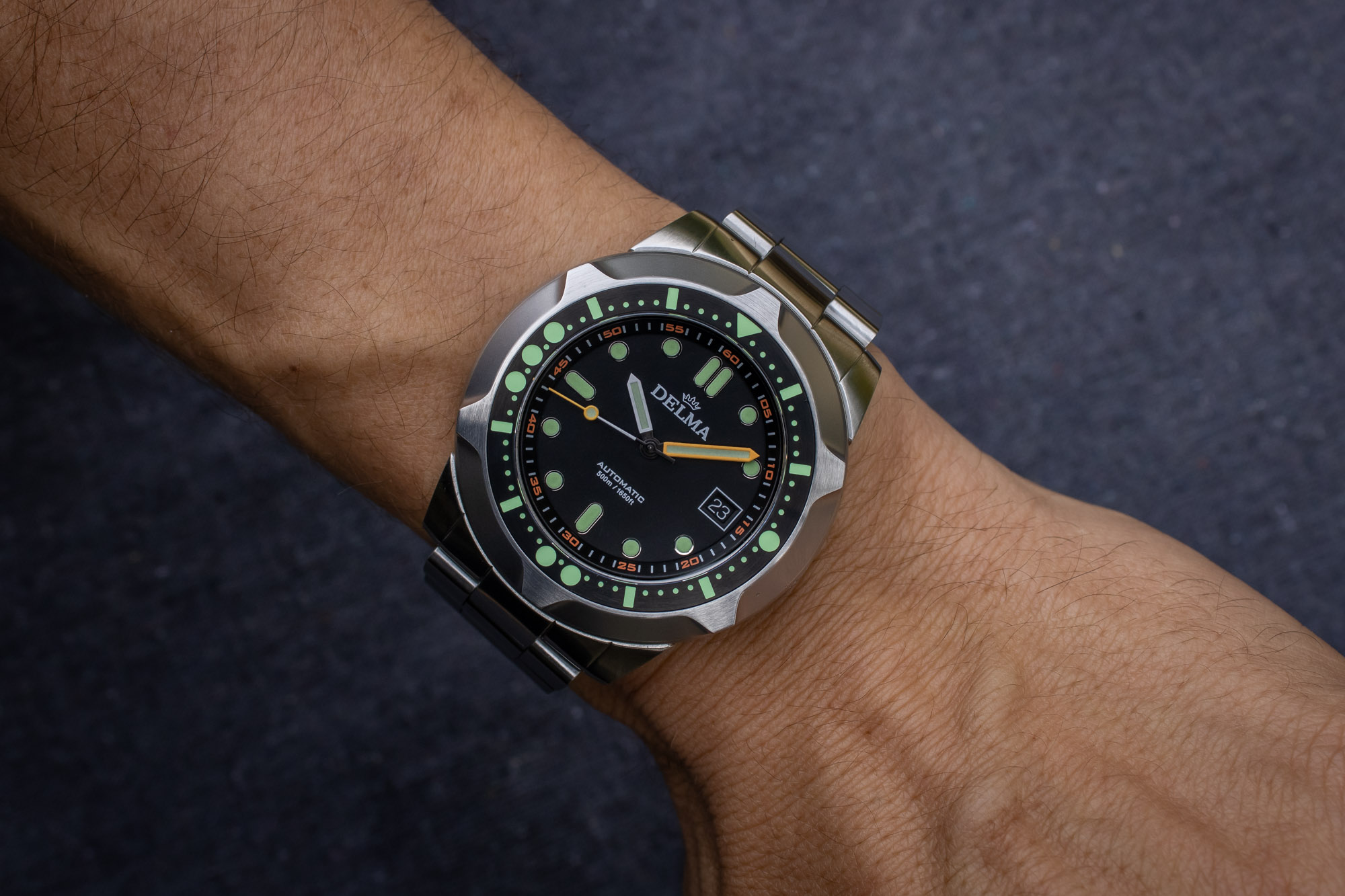
It’s a commonly accepted fact that most of the dive watches produced today never actually see any real-world scuba diving use, let alone get used for saturation diving applications. However, the primary reason collectors and enthusiasts appreciate dive watches is their rugged purpose-built capabilities. This ultimately leaves manufacturers in a slightly unusual position, where the dive watches they produce are largely purchased as collectibles by a highly discerning group of buyers, yet those same timepieces also need to be ultra-functional tools so they are able to survive crushing depths below the surface of the ocean. As a brand, Delma seems to recognize this. While many of its models are highly capable sports watches, they also represent rather enthusiast-driven designs. Nowhere is this more apparent than when looking at the Delma Quattro, which first debuted in early 2022.
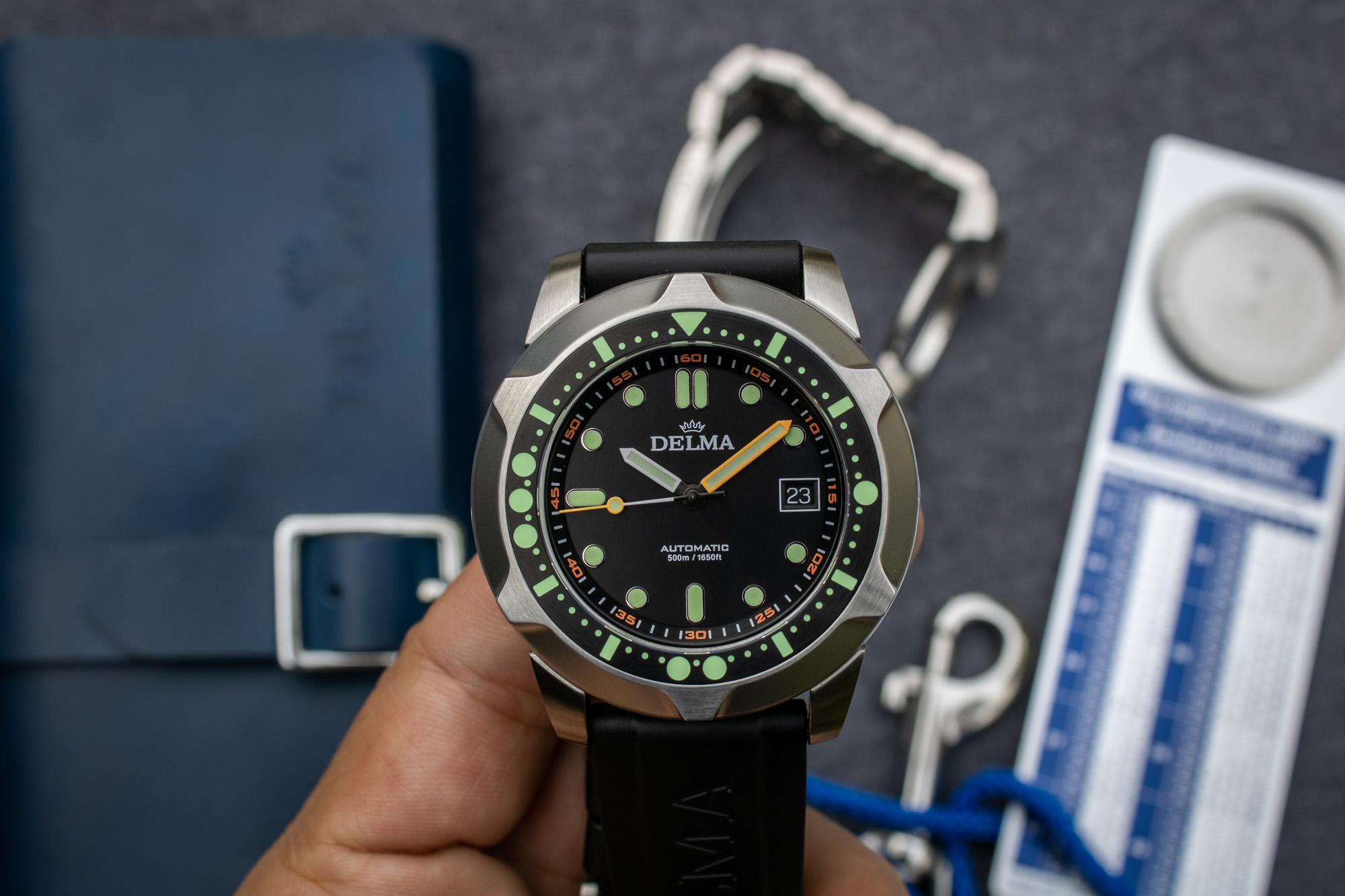
Significantly reimagining one of the brand’s popular quartz dive watches that was produced during the 1980s, the new Quattro is a purpose-built mechanical timekeeping tool that was created for saturation divers. Additionally, the new Delma Quattro isn’t so much a single wristwatch as it is an entire modular mini-ecosystem based around an innovative detachable case structure. When I first wrote about the debut of the Delma Quattro earlier this year, there were a few things that I found interesting about its design, although I wasn’t quite sure how they would actually translate and feel in person. Therefore, when the opportunity came up for me to spend some time with an example for a proper hands-on review, I happily took the opportunity to experience the new Delma Quattro in the metal to check out this unique and highly innovative take on a classic mechanical dive watch.
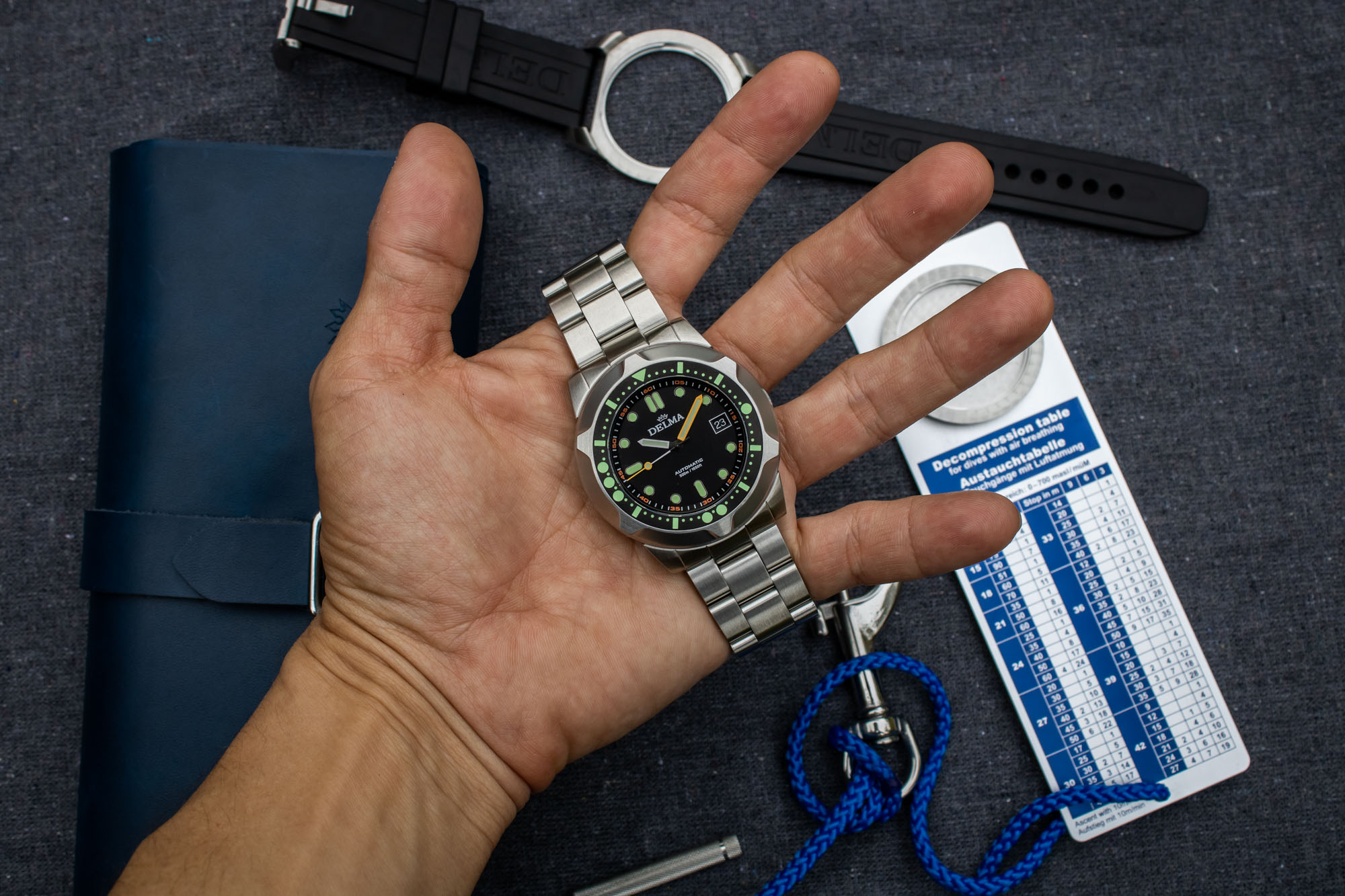
The packaging for the Delma Quattro is quite large, coming in at slightly bigger than a standard shoe box. It features two internal layers, along with a removable tray to contain all of the various components that make up its included kit. Known as the Rapid Bracelet Exchange System (RBES), the Delma Quattro’s modular case structure features a bayonet-style locking mechanism that allows users to detach the lugs and lower surface of the watch, and then swap it out for a different type of mounting attachment. As a result of this somewhat modular design, the case of the watch itself is just a round and symmetrical stainless steel form that measures 44mm in diameter by 13.7mm-thick. The left-hand side of the case features an automatically operated helium escape valve at the 9 o’clock location, while next to it at 8 o’clock is the small tab used to unlock the case mounting mechanism. Detaching the lower section of the case is done by pulling up on the tab and then rotating the head of the watch clockwise by 30 degrees, while reattaching it is done by simply reversing the same process.
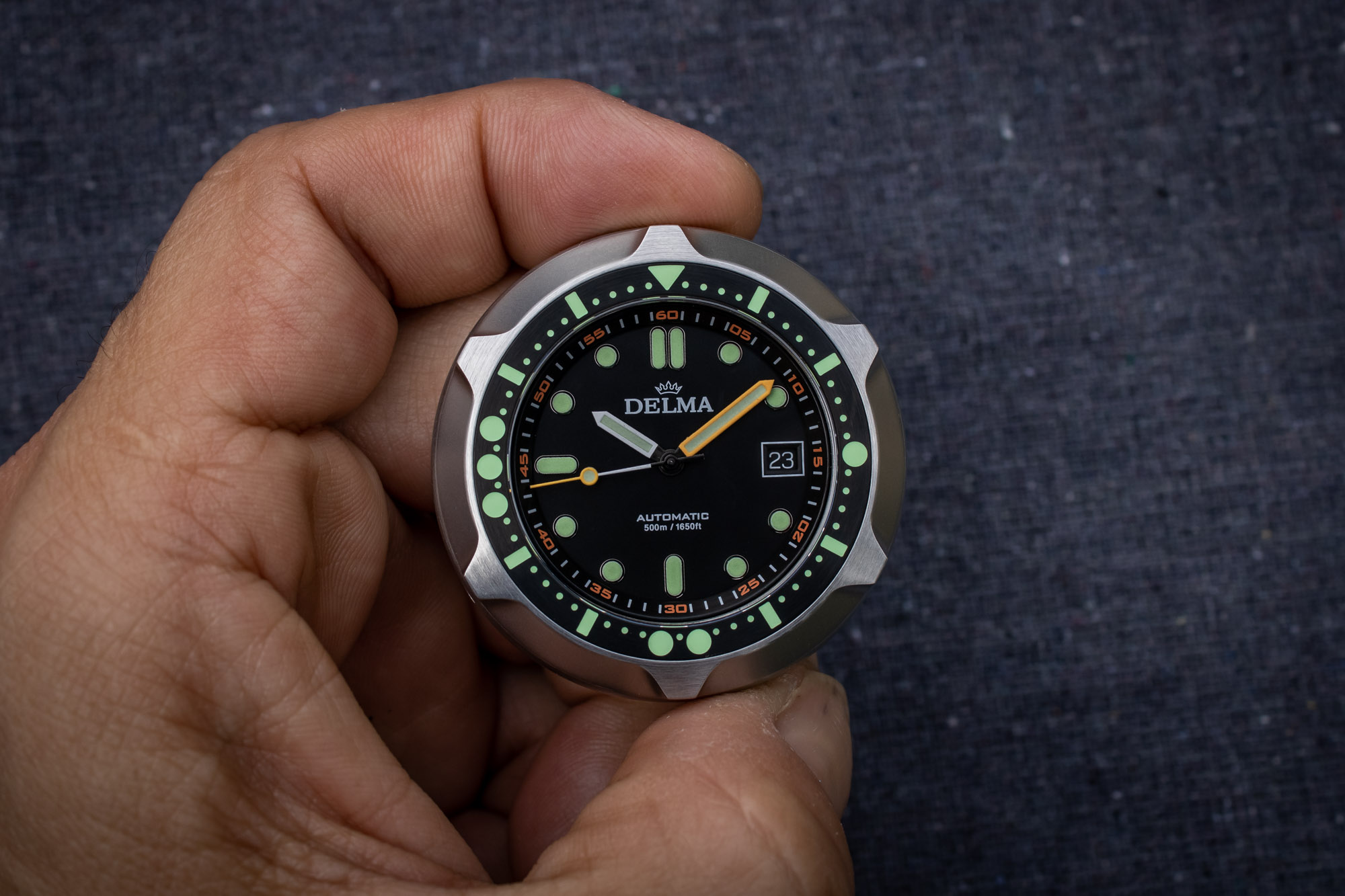
Since the case profile is more or less a perfect circle, it extends to completely cover the winding crown at 3 o’clock, and this means that it is more or less impossible to get the crown caught on anything or have it receive a direct impact. That said, due to the fact that there is no real way to grip the crown when it is fully screwed down to the case, the end of the winding crown features a deep, flat groove that can be accessed using a screwdriver, a coin, a fingernail, or a small tool that Delma also includes inside the box. Meanwhile, the dial side of the watch is protected by a flat sapphire crystal, which is surrounded by a prominent sloped bezel that gives it a rounded pebble-like profile. Six large tabs protrude from the rim of the bezel to offer an easy grip, while the center section of the bezel features a black DLC-finished insert with luminous markings. Like many dive watches, the bezel insert on the Delma Quattro features a fully demarcated scale with an inverted triangle to denote the zero marker. However, rather than having Arabic numerals, the Quattro features circles to denote the quarter-hour markers, with one circle to denote 15 minutes, two circles to represent half an hour, and three circles for 45 minutes. While this may not necessarily be the flat-out most practical approach, the geometric shapes play into the Quattro’s modern overall design while still offering a clear indication of elapsed time.
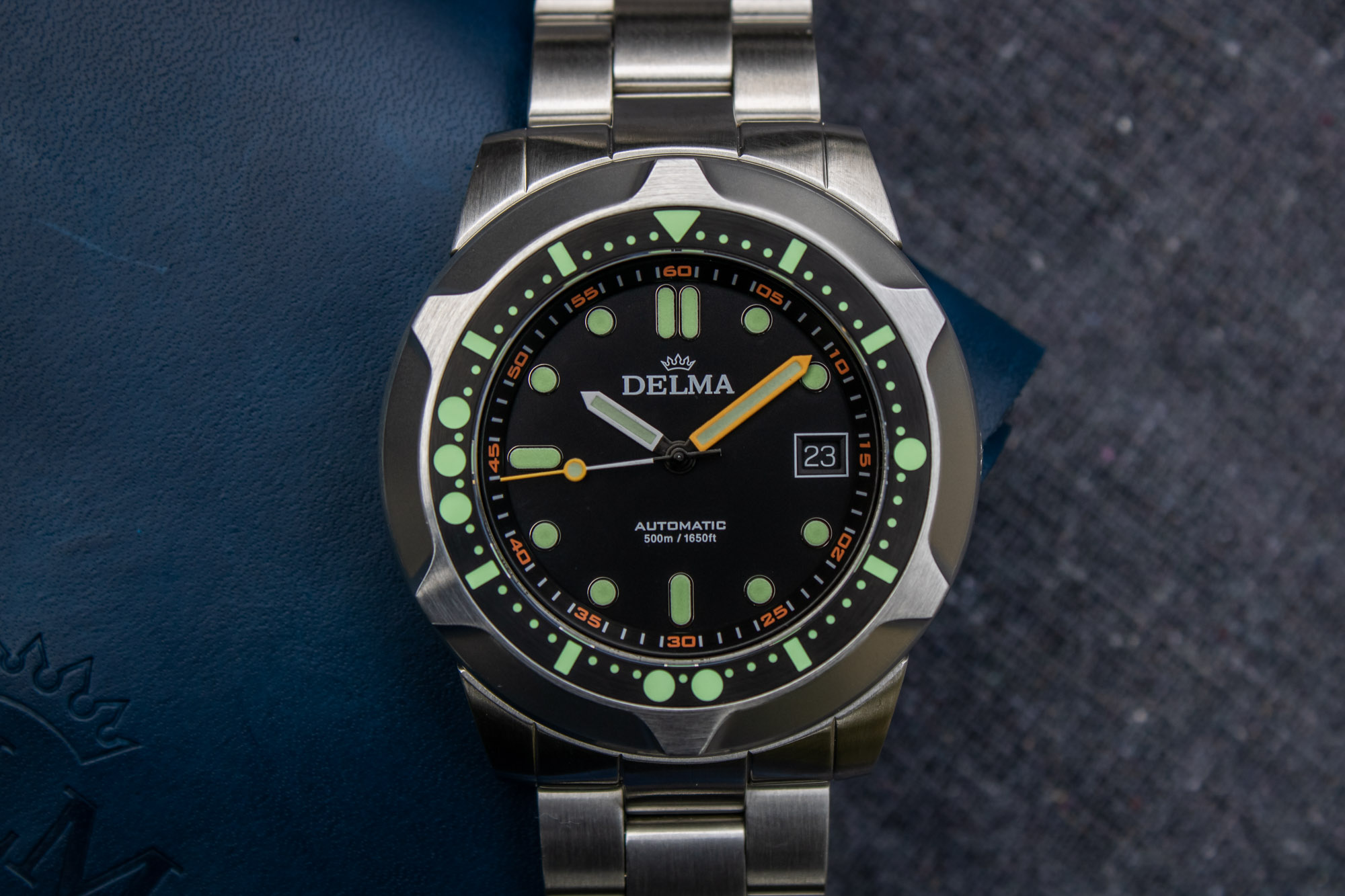
Flip the watch over, and you are greeted by a screw-down caseback with a sapphire display window to offer a view of the internal movement. Surrounding the rim of the caseback are all of the usual markings engraved along its perimeter, and this entire caseback section sits slightly raised from the rest of the reverse side of the watch so that it will ultimately sit completely flush when fitted with one of the case mounting attachments. The recessed section near the outer part of the case contains the workings for the case detachment system, which consists of three small spring-loaded bearings to provide it with a smooth motion, along with the grooved ring and pin for the locking mechanism. Just as you would expect from a purpose-built professional dive watch that is fitted with a helium escape valve, the Delma Quattro features a generous 500 meters of water resistance. This is far more than anyone will actually ever need, even if they do plan to use this watch for commercial saturation diving purposes.
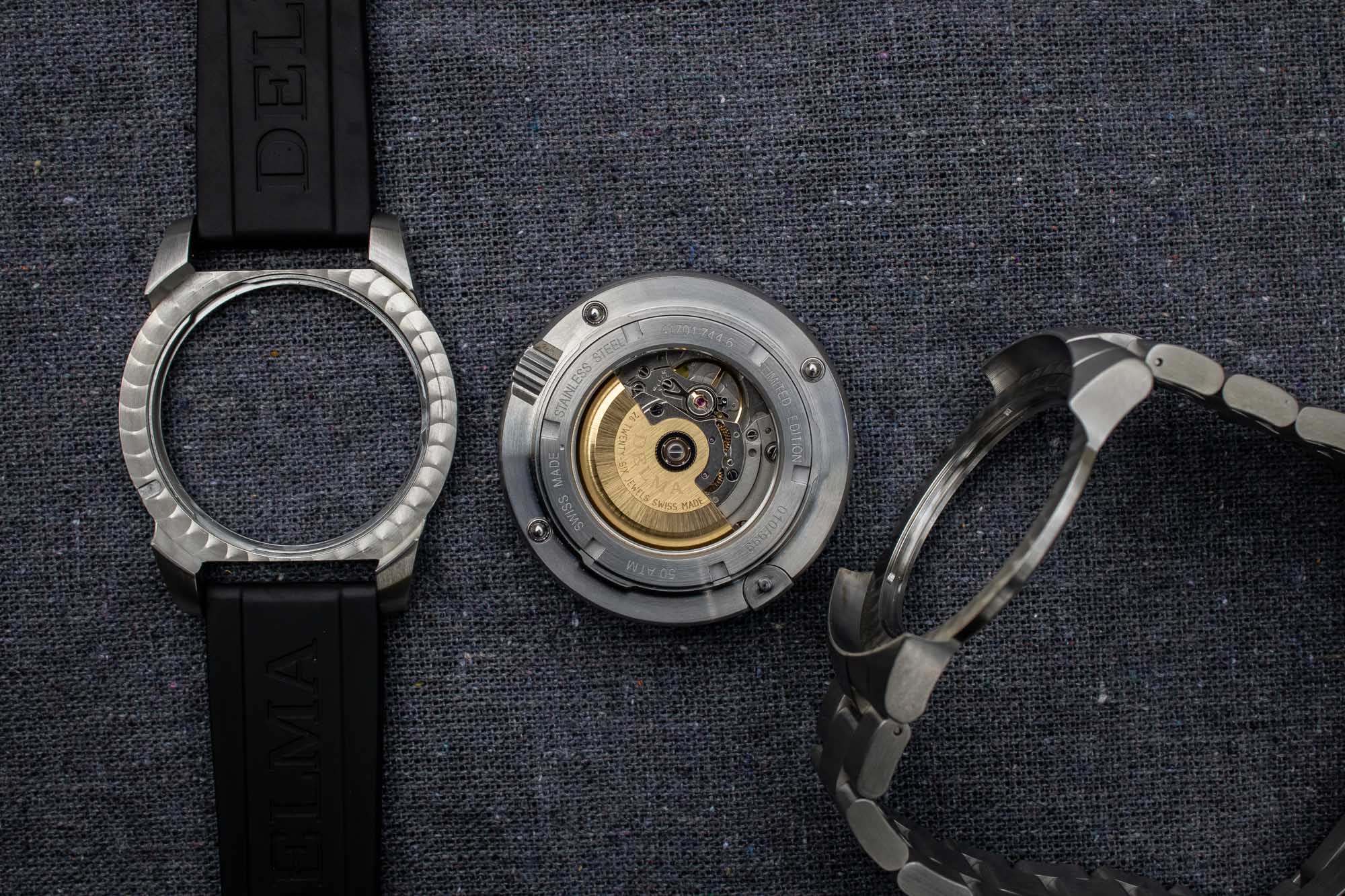
On the wrist, the Delma Quattro wears significantly smaller than its on-paper specs would indicate. The sloped design of the bezel inherently makes the face of the watch feel more compact. Since the case doesn’t have any crown guards or components protruding from it, the overall footprint of the Quattro is smaller than a traditional watch with identical dimensions. Additionally, the caseback is almost entirely flat, which lets its short curved lugs hug the wrist, further reducing its perceived size and presence. When fitted with either of its wrist-mounted case attachment options, the lug-to-lug profile becomes approximately 49mm, and while the Delma Quattro is still hardly a small watch, thinking of it only within the context of its on-paper case dimensions will definitely give you a larger impression compared to how it actually wears once you strap it to your wrist. In regards to the bezel action, it is ultimately quite smooth, although the amount of resistance is a bit less than what you get from most other dive watches. There is also a tiny amount of back-play, although the alignment of the bezel itself is entirely on-point.
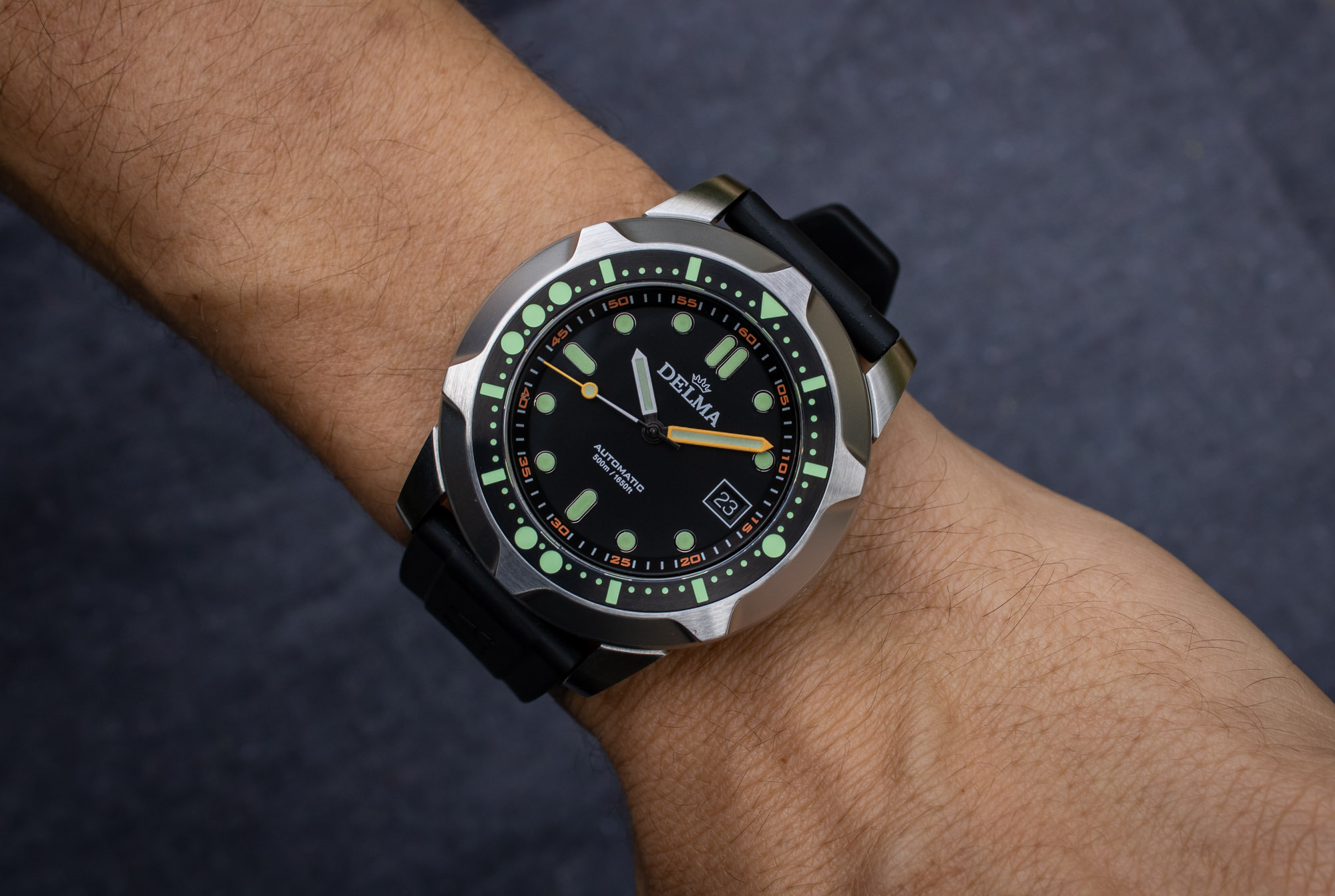
Although Delma also offers the Quattro with both bright orange and blue dials, the dial fitted to this review sample is the standard matte black version. Featuring raised luminous hour markers with thin polished surrounds and a date window at 3 o’clock, the dial is framed by an angled rehaut that contains a white minute track with prominent orange Arabic numerals to denote the five-minute markers. At the center of the dial is a trio of hands with black centers, and while the hour hand and the body of the seconds hand are finished white, the tip of the seconds hand and the minute hand appear in bright orange for added at-a-glance visibility. In contrast to its modern and rather unusual case structure, the overall design of the Delma Quattro’s dial and hands is fairly traditional. The combined appearance ultimately creates a decidedly contemporary watch that still feels strangely familiar. Additionally, between the Super-LumiNova C5 that appears on the hands, hour markers, and bezel insert, the Delma Quattro offers a brightly glowing display in low-light settings. While this is certainly a useful feature for divers, it’s also likely to delight any watch enthusiast who enjoys seeing their timepiece light up whenever they step into a dimly-lit room.

Powering the Delma Quattro is the tried and true Sellita SW200-1 automatic movement. Virtually identical to the ubiquitous ETA 2824 and currently produced by a number of different movement makers under a variety of names, this core design is the single most commonly used self-winding caliber in the entire Swiss watch industry. Reliable, easily serviced, and ultimately entirely inauspicious, the Sellita SW200-1 runs at a frequency of 28,800vph (4 Hz), while offering users a power reserve of approximately 38 hours. While the version of the SW200-1 fitted to the Delma Quattro features a nice gold-finished oscillating weight and sits on display through the sapphire window in its caseback, the movement really isn’t the focal point on dive watches. Instead, a proven and reliable caliber that is simple to repair and affordable to maintain is ultimately far better suited for a tool watch than some in-house movement filled with proprietary technology that needs to be sent back to the manufacturer every time work needs to be performed. No one ever boasts about having a watch powered by a Sellita SW200-1; however, no one ever complains about it either whenever the time comes for them to get one serviced. Unless you specifically need a longer power reserve or slightly tighter timekeeping performance, then an in-house caliber really doesn’t provide any tangible advantages for a simple three-handed dive watch like the Delma Quattro.
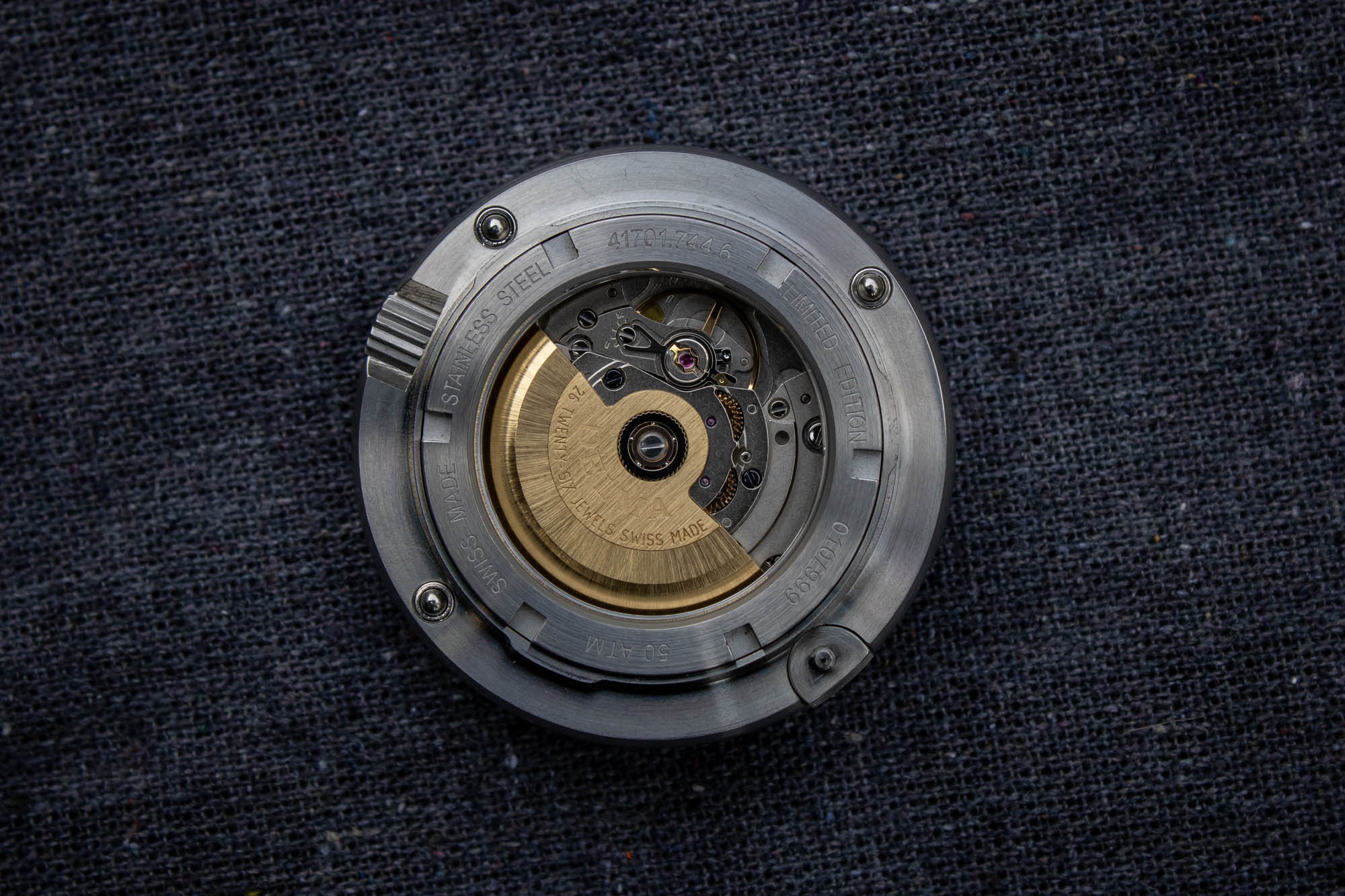
Since the party piece of the Quattro is its Rapid Bracelet Exchange System, Delma includes three different mounting attachments that offer different ways to wear and use the watch. The first is one that gives the case standard 22mm lugs, which can be worn with the included two-piece rubber strap or fitted with any other third-party strap of your choice. The second attachment transforms the Delma Quattro into an integrated bracelet watch with a flat three-link bracelet and a double push-button folding clasp. Lastly, the third attachment is a rectangular aluminum plate with a diver’s decompression table printed on it. This comes with a clip-on lanyard enabling it to be attached to equipment while diving, should users wish to use the watch as an instrument, rather than in a wrist-mounted format. Realistically speaking, I imagine most people will be interested in the Delma Quattro as a wristwatch. However, the additional mounting plate does present a number of interesting and novel possibilities outside of diving applications, such as using the watch as a wall or shower clock.
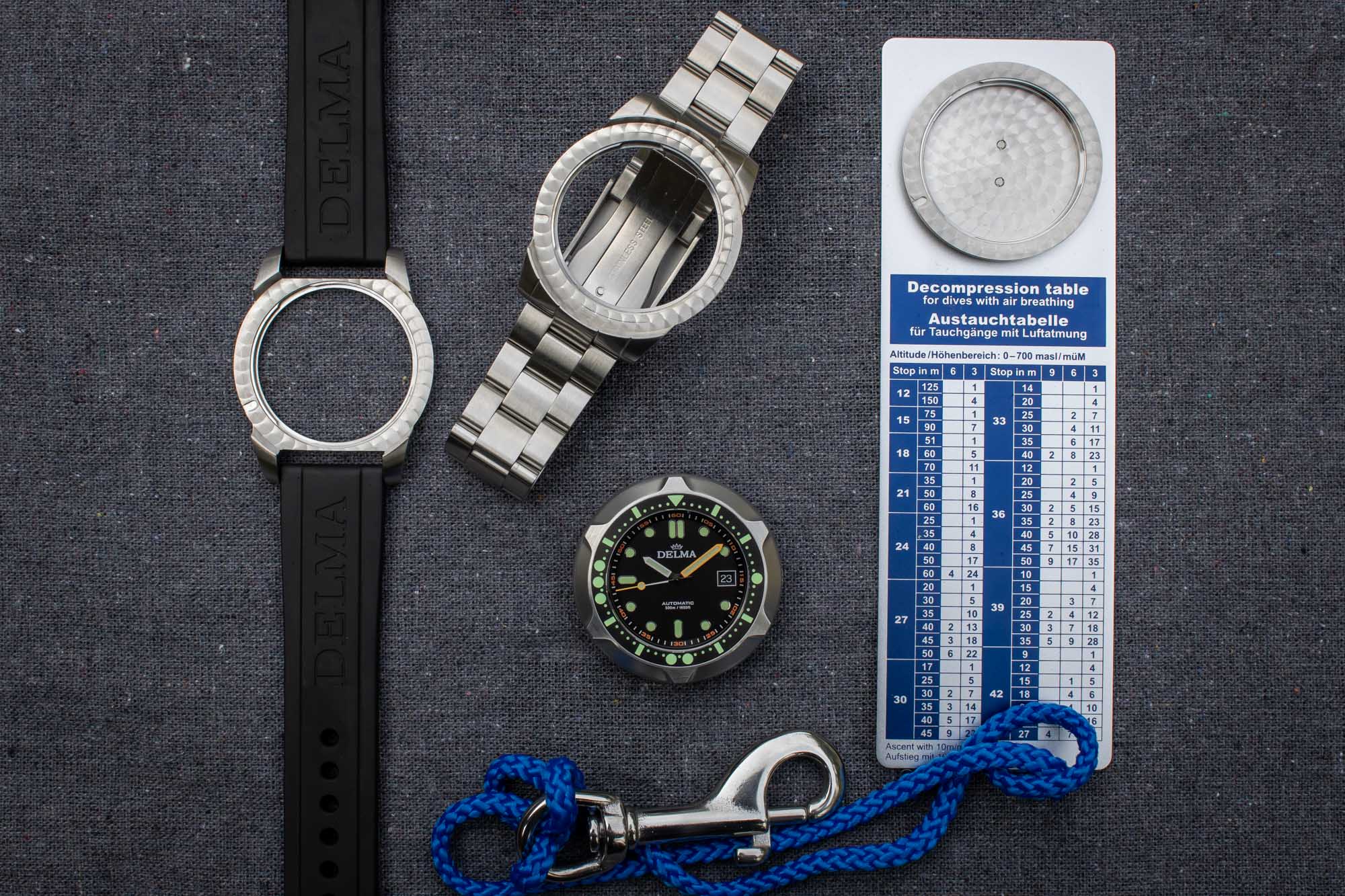
The included black two-piece rubber strap features the “Delma” name embossed lengthwise into its outer surface, and it comes fitted with a chunky signed stainless steel pin buckle. Meanwhile, the integrated bracelet attachment features entirely brushed surfaces with solid links and a machined folding clasp. Both the bracelet and clasp feel quite solid, although the removable links are secured by pins rather than screws, and other than three holes of micro-adjustment, the clasp doesn’t feature any type of extension system whatsoever. Similarly, even on the smallest sizing hole, the rubber strap is still a little bit larger than I’d personally like for my wrist. Anyone with a wrist size smaller than about 6.75” might want to take this into consideration if they plan on wearing the Delma Quattro on its included strap option. With that in mind, the stainless steel bracelet offers plenty of removable links to fit most wrist sizes (although screw-in links would have been preferable at this price point), and since the other case attachment features standard 22mm lugs, finding a suitable alternative for the rubber strap would be an easy task with a seemingly infinite number of compatible options available.

The case mounting for the decompression plate has a slight bit of play to it, and while the watch itself connects very solidly into the mounting itself, it is the connection point between the mounting cradle and the aluminum plate where this small amount of wiggle exists. That said, given that the diver’s decompression plate is largely going to be a novelty/accessory for collectors, the small amount of play is hardly a sticking point, and I imagine that most people will be using the Delma Quattro as a wristwatch anyway. The proliferation of quick-release connectors for straps and bracelets has made swapping between options an incredibly easy process in more recent years. While the Delma Quattro’s Rapid Bracelet Exchange System is largely just a different way of achieving a similar core function, operating it is undeniably fun, and there is also absolutely zero risk of scratching the lugs or stabbing your finger with a spring bar tool since all you have to do is pull up on the small tab and rotate the case. Alternatively, should you wish to use the Delma Quattro as a regular watch, simply remove the rubber strap from its included attachment, and you are left with a standard case that has normal 22mm lugs.
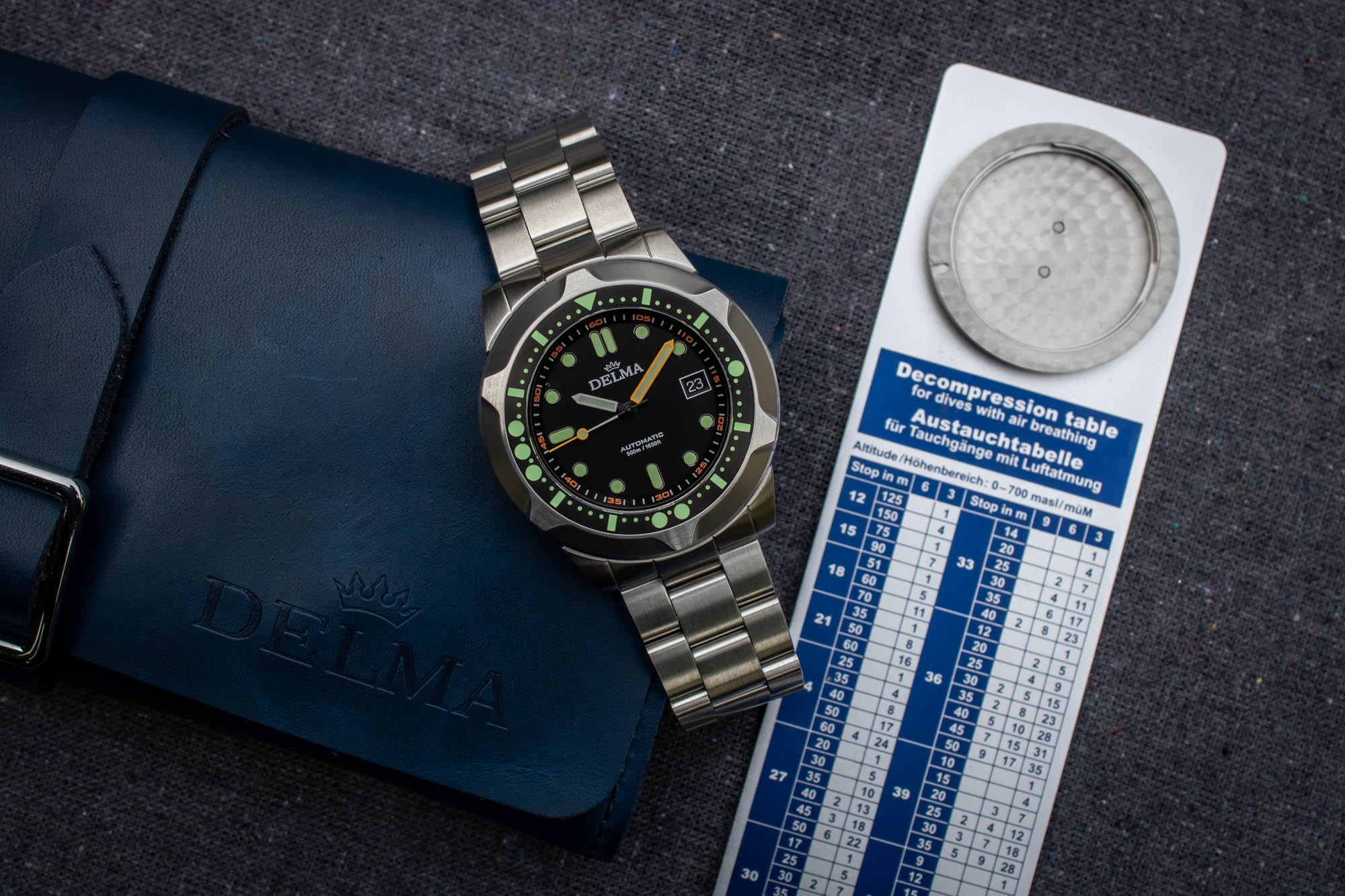
Realistically speaking, despite the fact that it offers all of the necessary features for a life spent deep below the surface of the ocean, I primarily foresee the Delma Quattro being purchased by collectors and dive watch enthusiasts who appreciate the model for its design and innovative features. With that in mind, that exact same statement applies to virtually all of the ultra-capable saturation diver’s watches being produced today. If you look at the Delma Quattro within the context of how it is actually likely to be enjoyed and worn by those who purchase it, the watch actually delivers a decent amount for the money. Produced as a limited edition of 999 pieces and with an official retail price of $2,390 USD, the Delma Quattro is undeniably a bit more expensive than some of the other watches that deliver similar professional-level specs and are powered by this same movement. That being said, it’s important to remember that you are ultimately receiving a bit more than just a single wristwatch with the Quattro, along with the novelty of a unique modular case system. Due to the popularity of dive watches and the number of options that are available, it can often be hard for brands to make a diver that truly feels unique. However, the Delma Quattro does feel like very much its own watch, and for the enthusiast who appreciates overbuilt dive watch designs with plenty of tactile intrigue, the Delma Quattro ultimately represents a rather compelling option. For more information, please visit the brand’s website.

